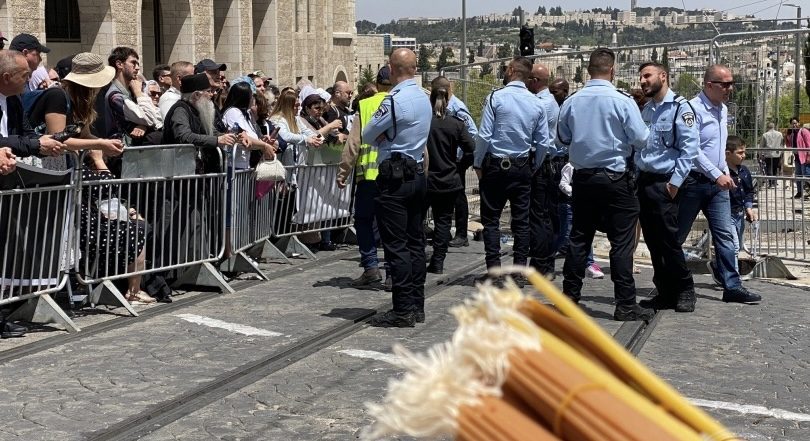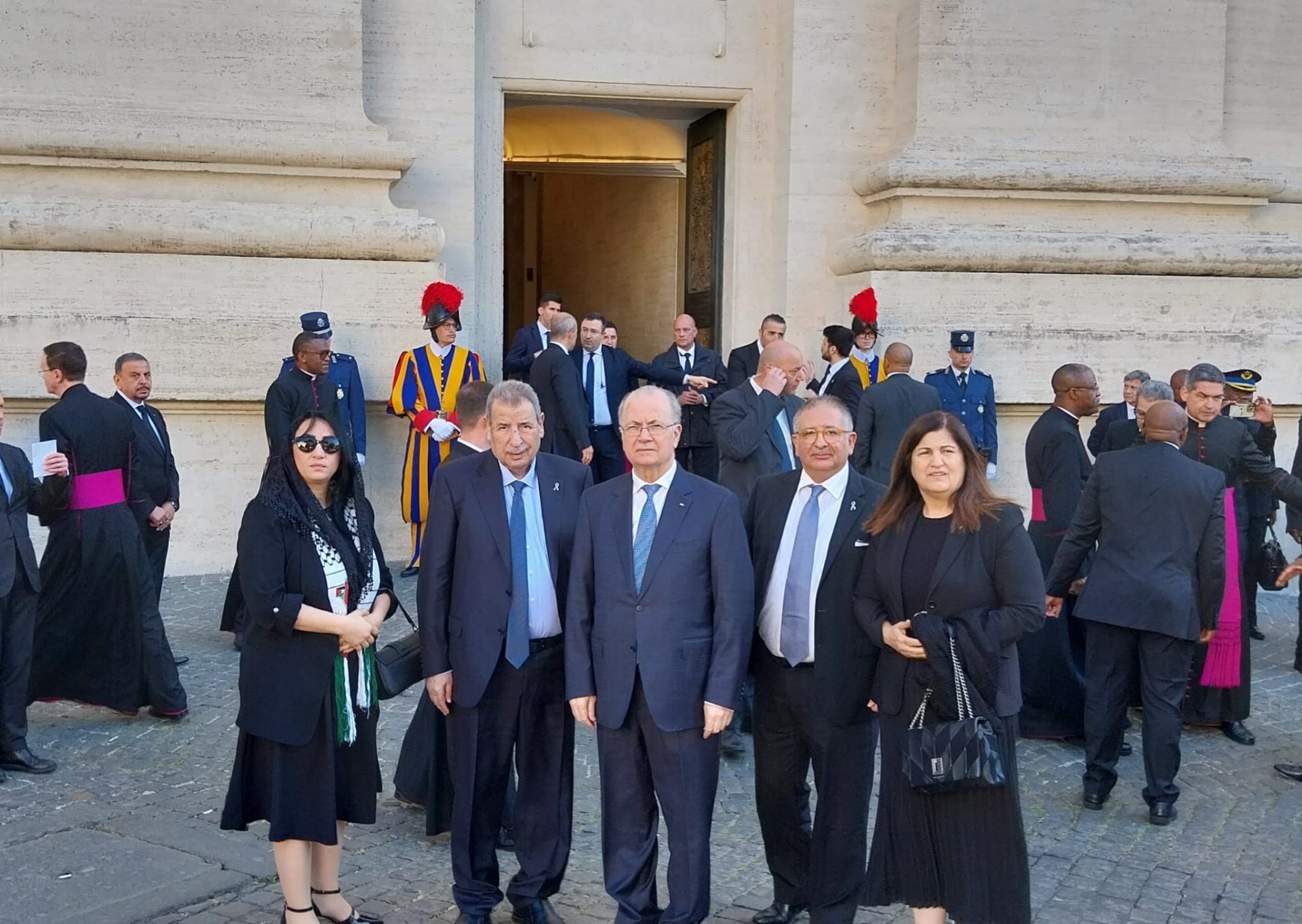During a Press Briefing held at the Christian Media Center on May 6 for the upcoming May 17 canonization of the two Palestinian nuns, Blessed Mariam and Blessed Marie-Alphonsine, Bishop William Shomali, Latin Patriarcal Vicar for Jerusalem and Palestine, evoked the meaning of holiness today and explained the importance of such an event for the Holy Land. Below is the full text of his address.
I thank the CMC for organizing this press conference ahead of our pilgrimage to Rome where Pope Francis will declare on the 17th of May two Palestinian nuns as saints. The technical word used for such an event is canonization.
The Holy Land prepares itself for such an important event. Many poets competed to write songs and hymns, filmmakers are doing the same. More than 15 books in different languages were written to spread their thoughts and holiness.
What does such an event mean in itself and what does it mean today for us, the people of the Holy Land: be Arabs or Jews, Palestinians or Israelis or Jordanians, Christians or Muslims.
I allow myself to use an analogy. Every year, a Nobel prize is given to the best people who rendered great services to humanity in the field of science, literature, medicine, economics or peace. A peace Nobel prize winner is an outstanding man or woman who sacrificed oneself and put all his/her energy in conflict resolution, in achieving reconciliation or avoiding conflicts or even denouncing oppression and injustice. The Catholic Church has its own parameters to honor the best among its faithful who fulfilled some requirements.
A saint, in order to enjoy the eternal bliss with God and his angels in heaven, should :
1- have a great experience of God and communion with him,
2- live a high and heroic standard of ethical life: honesty, humility, abnegation, wisdom, charity, love and forgiveness,
3- People should witness to this holiness. For this reason the church has some legal procedures of investigation through the writings, sayings and deeds of the candidate to holiness before declaring him/, first venerable, second blessed and third as saint.
4- In order to obtain the last two degrees, two miracles are requested. The two miracles should be studied by local, then international committee of medical doctors. A miracle should be like an instantaneous healing, not as a result of taking medicine or surgery, and thanks to the intercession of the saint. These conditions render difficult the process of canonization. For this reason, Marie Alphonsine Ghattas who died in the year 1927 and Myriam Bawardi who died in the year 1878 are being canonized only this year.
Our two saints successfully passed all these tests. We will not speak about the miracles they have done. Time is short. But you can read the pastoral letter of the Patriarch about this subject.
Finally a saint, besides enjoying the eternal happiness in heaven, is being object of veneration by the local community and the whole church, is a shining example to imitate and offers a powerful intercession.
Our Holy Land has given hundreds of saints since the first century until today. Our greatest saint is Holy Mary, Mother of Jesus, her husband Joseph, the first apostles, many bishops, monks and martyrs of faith. Some names are outstanding: Jerome, Justin, Helena, Sofronius, Saba, Euytimus, Albert of Jerusalem. But we have only three from the modern period and whose language was not Greek, Latin or Aramaic but Arabic. Holiness can be conjugated with the Arabic language.
Besides Bawardi and Ghattas, the third is Simon Srouji, a Salesian. His cause is under study in Rome.
The two nuns met in Bethlehem around the year 1875. One was contemplative, Carmelite who lived her last years in Bethlehem. The other was active and foundress of the Congregation of the Holy Rosary. She served as teacher, nurse and spiritual counselor in the following cities Beit Sahour, Jaffa of Nazaret, Zabadeh, Salt Bethlehem and Ain Karem.
What does their holiness mean for us?
1- It means first that our Holy Land is capable of holiness and continues to be Holy not only because of the holy places it hosts but also because good people live here.
2- These two saints lived in difficult times of extreme poverty, lack of freedom, it was the Turkish Ottoman Empire, lack of schools and universities. Many people especially women were illiterate. They suffered sicknesses and diseases, hunger and thirst and lack of comfort. But they had perseverance, patience, humility and above all, they loved God and their neighbor in a heroic way. The Holy Spirit was their teacher.
Mariam Bawardi was a contemplative Carmelite. She was a mystic. From her we learn how to pray and how to enter in communion with God. She spoke with poignant words about the mercy of God, his closeness and readiness to forgive the biggest sinners. Our admiration is bigger when we know that she was almost illiterate.
3- The other saint, Marie Ghattas opened the first schools for girls in the villages she visited like Salt, Zababdeh, Beit Sahour and Jaffa of Nazareth. She defended women and helped them to have access to culture and education, which are the best means for their freedom and dignity. She was active without ceasing to be contemplative while the other was contemplative without ceasing to be active. When Mariam Bawardi died, a witness said: if she does not enter heaven, I doubt any one would.
4- Intercession for peace: the two saints lived in Palestine before it was divided. They did not know the Israeli-Arab conflict. I am sure they follow our situation from heaven and will continue to intercede for peace and reconciliation in the Holy Land. Their intercession is strong and efficacious.
Conclusion: Palestinians should be proud of these two saints. President Mahmoud Abbas will participate in the celebration in Rome with a high ranked delegation. I believe that not only Christians but also Muslims and Jews can be happy because two persons from our country joined the highest degree of human righteousness, spiritual wisdom and mystical experience of God. They are models for all and intercessors for all. Interceding for the Holy Land, they do not segregate among Christians and non-Christians. By incidence both are called Mary, Myriam. It is extraordinary: this name is common to Jews, Christians and Muslims. May they become a bridge between us all.
Source: Lpj.org







